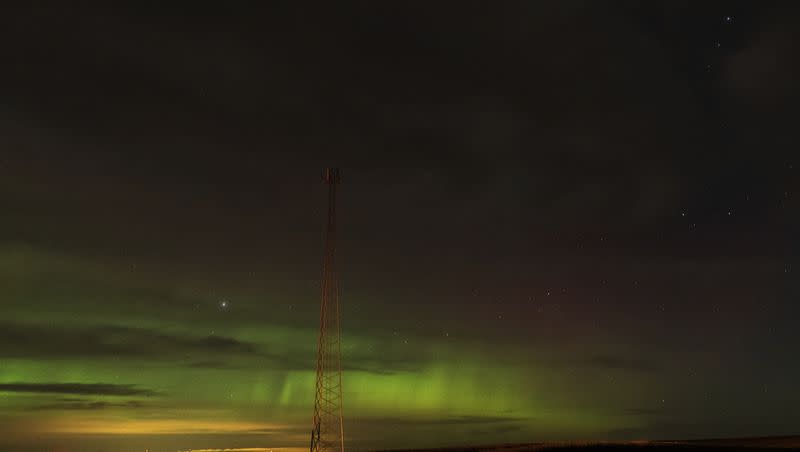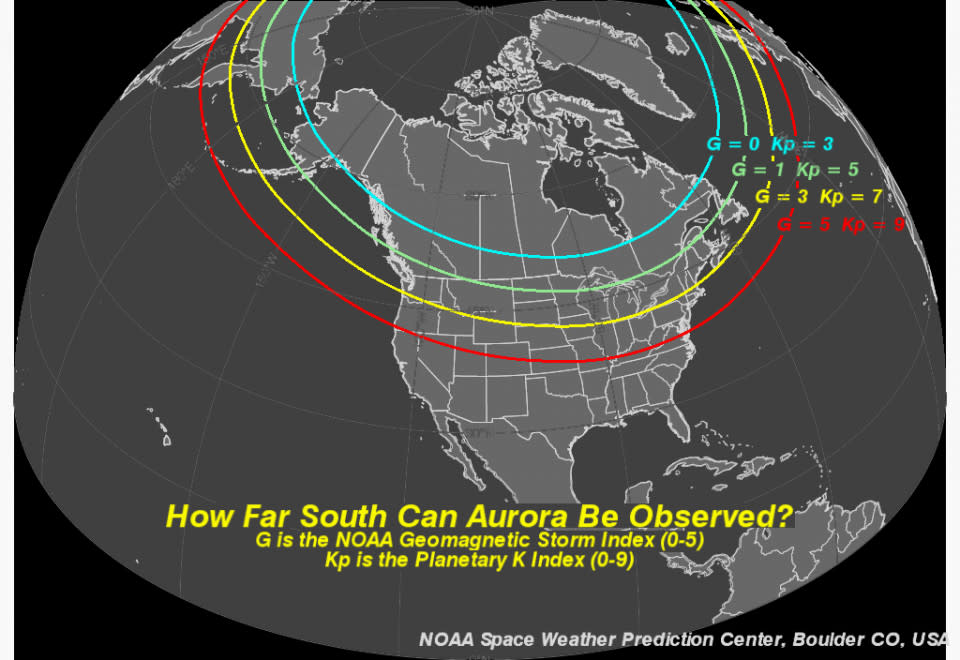A ‘hole’ in the sun’s atmosphere will bring intense northern lights on Friday. Here’s where you can see them

Due to the strongest solar storm in five years, several states will be able to witness intense northern lights on Friday night, according to Forbes.
The perfect storm: A combination of cracks in the Earth’s magnetic shield, and a giant coronal hole in the sun’s atmosphere, allowed a “big blast” of charged particles from solar winds cause a G4-class geomagnetic storm, which will result in vibrant northern lights, Forbes stated.
Usually, northern lights are only visible close to the Arctic Circle, but the Space Weather Prediction Center says they could be visible farther south than usual, per Insider.
On Thursday night, the lights were visible in some places as far south as northern California and Nebraska, according to USA Today.
There's something about the period around equinoxes that seem excite auroras. I mean, after a day like yesterday, who wouldn't be? 😀
This image from @Skunkbayweather in Hansville this morning is just jaw dropping. And that color of aurora is not common around here. #wawx pic.twitter.com/RXYLYP2q7f— NWS Seattle (@NWSSeattle) March 23, 2023
#northernlights #Aurora gave us quite a show at NWS LaCrosse last night/early this morning. Hope you were able to check it out. Thank the solar wind interaction with upper atmosphere (oxygen/hydrogen) for green-red shimmering curtains of color. Science is cool. #mnwx #iawx #wiwx pic.twitter.com/SRVObLZB78
— NWS La Crosse (@NWSLaCrosse) March 24, 2023
Where will the lights be visible? The aurora borealis forecast predicted a Kp index of 6 for Friday, per Insider, meaning that the lights will be visible somewhere in between the green and yellow lines in the image below:

The states along the northern border of the U.S. are the most likely to see the lights on Friday.
Tips for viewing the northern lights: The Space Weather Prediction Center states that in order to get a good view of the lights, you need to have a clear view of the northern horizon. Standing on a hill or elevated land is optimal so nothing blocks your view.
It must be dark to view the northern lights, meaning that you’ll need to get away from any city lights. This means that people near large metropolitan areas might have a lower chance of seeing them. Even the full moon or clouds can obstruct the view of the lights.
Northern lights are usually brightest between 10 p.m. and 2 a.m. local time, the SWPC said. The aurora borealis are usually their most intense around the fall and spring equinoxes, which is when geomagnetic storms are more likely to occur.

